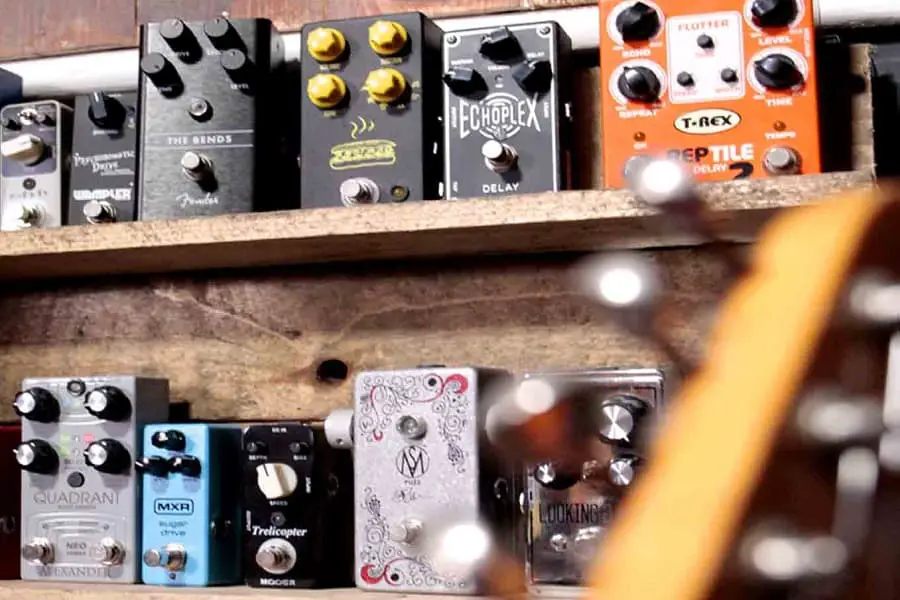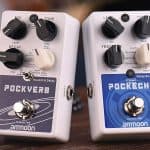A pedal is an added accessory that many guitar players use.
While they are not essential for playing the electric guitar, they can help enhance the sound of your guitar makes, and make playing music a more interesting and enjoyable experience.
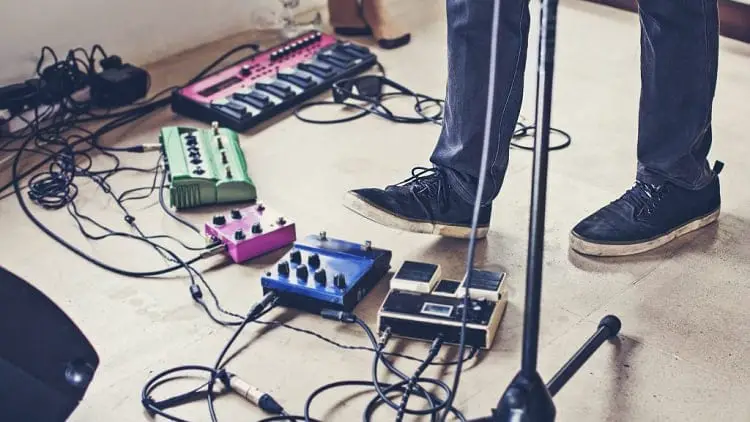
However, there are a number of different types of guitars on the market, and each will create a different sound experience for your guitar. But which do you choose and how do you know what sounds they will create?
If you are new to playing an electric guitar, you’ll want to invest in at least a couple of pedals, so that you can experience the full range of sounds from your guitar.
In this article we’ll talk about why you need a pedal for your electric guitar and how to use them. Then we’ll give you a brief breakdown on the most common pedals on the market.
Why do I need a guitar pedal?
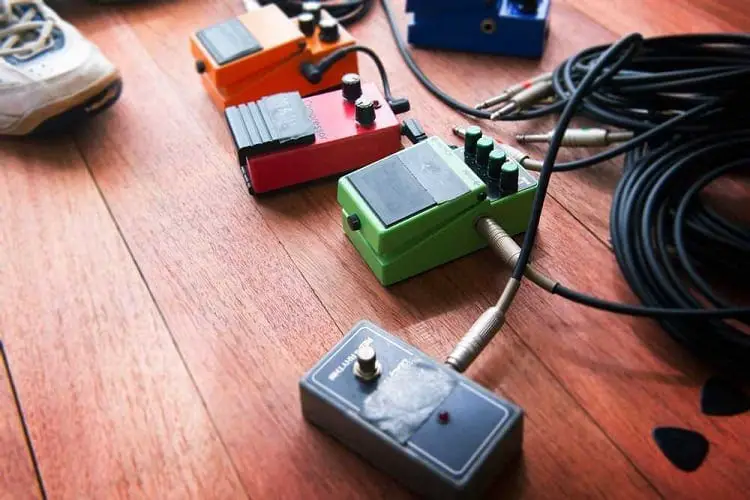
As a guitar player, you may have noticed that many experienced guitarists use pedals.
If you are new to playing the guitar, you may be wondering if you need a pedal, and what they can do for your musical experience. While most new guitar players are focused only on the basics, as you grow, and your playing skills improve, you may find that you are drawn to the idea of using a pedal.
Before you decide to use a guitar pedal, it is helpful to understand what a pedal is and how it can enhance your playing experience.
Many of the most well-known guitar sounds in popular rock songs were made with the help of pedals. Pedals can help you create your own, unique sound or recreate the sounds of other guitarists that you enjoy listening to.
Many guitarists use a variety of pedals to create a range of volumes, sounds and tones. These pedals can be used in combination or individually to enhance the sounds made by your electric guitar.
Some of the other things that a pedal can do, are quite simple, like helping you control the volume of your guitar, without having to constantly adjust your amp, or change the way you play your guitar.
Other pedals can extend the octave range of your guitar, beyond what is naturally created by the instrument, or allow you to quickly move from one octave to the other, without moving your hand position.
Guitar pedals are a great tool, and they are so popular with electric guitar players that they are almost and essential accessory for guitar players of all levels.
So do you need a guitar pedal?
Yes, and no.
Your electric guitar will play just fine without a pedal. If you are new, and want to focus on learning the basic skills necessary for playing a guitar, you don’t need a pedal right away. Pedals can be added on at any time.
If you are an experienced player or if you feel that your skills have developed enough to start experimenting, a pedal is a great way to change the sound of your guitar, and create your own, unique playing sound.
If you want to get the most from your guitar, a pedal is a must. But remember, it isn’t an essential, so don’t worry if you don’t have one, or if you aren’t ready to use them yet.
How do I use a guitar pedal?
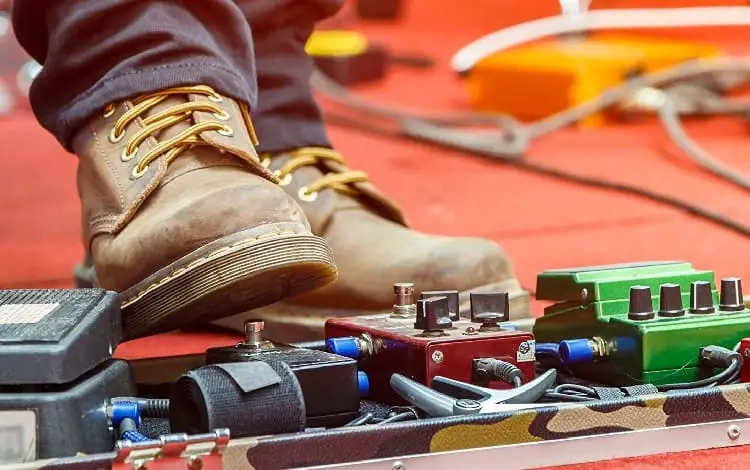
So, you’ve finally taken the leap into using a guitar pedal.
But, you aren’t quite sure how to use one. Here is some helpful advice on how to use a pedal properly, so that you can successfully create the perfect, unique guitar sound.
Step one, pick the right pedal – We’ll cover the different types of pedals later in this article, but it is important to know which pedal makes the sound you are looking for, and purchasing the right one.
Otherwise, you’ll find that you’re disappointed with the sounds, and may get frustrated with the experience.
An important reminder, if you are playing the bass guitar, make sure that when you are shopping for pedals, you may want to purchase bass specific pedals.
Some pedals will work on regular and bass guitars, others may not. Make sure that you research the pedal you want to ensure that it is right for your bass guitar, and won’t be a sad disappointment the first time you try to use it.
Additionally, some pedals come with a large pad to hit with your foot, others come with what looks like a button.
Some players like having more room to move and will pick pedals with larger pads, others people don’t mind the small button, or want more complex pedals, so they learn to work with a smaller foot space.
Plugging in Your Pedal – Once you’ve purchased your first pedal or pedals, you’ll need to make sure that you connect them correctly. Usually, we would just plug our guitar directly into the amp.
However, when you are adding a pedal to your set-up, you will need to make a few modifications in how you arrange your equipment.
When you play your electric guitar, the sound is converted to an electrical signal that is sent through your cable to the amplifier, where it is converted back to a sound.
The sound, without a pedal is the organic sound created by the strings, and is just made louder. When you add a pedal, the electrical signal is changed and a sound different than the guitar makes on it’s own is generated.
In order for this change to occur, the sound must first pass through the pedal, then through the amp. This means, that the correct way to set up your guitar with a pedal is to plug the guitar directly into the pedal, and then into the amp.
If you are using multiple pedals, you will want to string them together using a patch cable.
Powering your Pedal – Once you’ve figured out how to connect your pedals, you need to know how they will be powered. Some pedals use external power, from a regular outlet to work, others rely on internal battery power.
There are benefits and downfalls to both, and it is important to understand your needs, before you buy a pedal. If you play lots, or perform live, you probably want pedals that rely on an external power.
Batteries can be unreliable and you don’t want to lose your pedal, mid-song. And while external power is more reliable, it can be a pain to add another wire, or wires to the already extensive collection of wires you might have, if you’re using more than one pedal.
To reduce the web of wires, if you do chose external power, you may want to invest in a power hub that will allow you to plug in multiple pedals to a central location. The power hub will plug into your wall outlet, eliminating the need for power strips, and a mass of wires running along the floor.
Time to Play – Each pedal will have different operating instructions. To adjust settings or change sounds, make sure that you read the instructions closely, and then play away.
Pedals are foot operated, so you don’t need to let go of your guitar to use them. You’ll want to experiment with sounds, and timing with your pedals, so that you create the sound that you want, when you want.
Types of Guitar Pedals
If you are just starting out with your electric guitar, you might not know where to begin when it comes to buying a pedal.
We’ve created this list of popular pedals to help guide you through your purchase.
We’ll give you some helpful information about what each pedal does, the type of player that will get the most from the pedal and then some pros and cons.
These are generic overviews of pedal types, so they will give you an idea of the pedal’s function, you’ll need to research brands to determine which brand you prefer and what they offer in terms of pedal selection.
Tuner
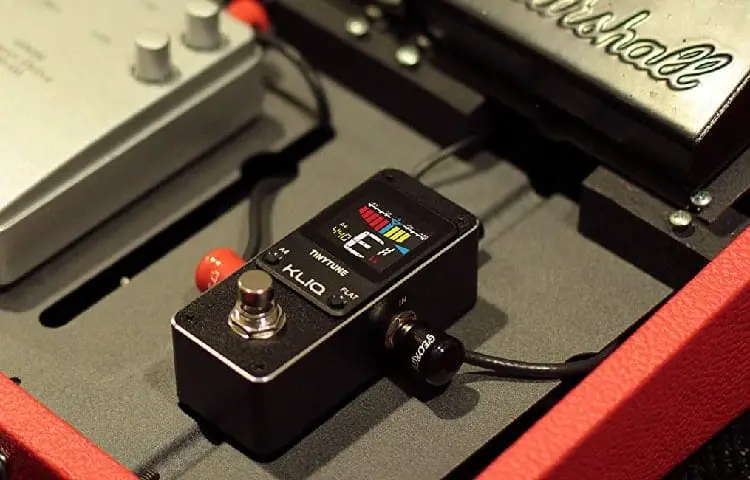
This pedal is a must have for all electric guitar players, especially if you are planning to play live or switch frequently between guitars. This type of pedal is almost a necessity, and you won’t see many professional guitarists playing without a tuner pedal.
Tuner pedals allow you to quickly tune your instrument without unplugging it, and allowing you to tune your instrument without the sounds being heard by others. Tuner pedals mute the sound from your guitar so you can quickly and quietly check the tuning of your guitar.
This is a handy feature if you are concerned about your instrument losing pitch or if you are performing live, and plan on switching between guitars during the set.
The handy thing about tuner pedals is that you don’t have to check the tune of each string individually, the pedal will tell you exactly which string is out of tune.
Pros: Quick, easy, silent tuning.
Cons: It’s hard to see a bad thing here, but if you don’t know how to tune your guitar, this one is going to stump you.
Who needs this: Any guitar player will benefit from a tuner pedal, but especially those that are playing live gigs.
Distortion
Next to the tuner pedal, this is probably the most popular pedal used by guitarists.
These pedals take the organic sound made by your guitar and change it up. In general, the distortion pedal takes the original sound made by your guitar, and adds an extra level of aggression to the sound. You’ll recognize the original sound of your guitar, but it will be more.
A distortion pedal is a great option if you want to hide the original sound from your guitar and add some length and sharpness to what you hear.
The term distortion can also refer to other pedals that you might want to include on your pedal board including the sustain and fuzz pedals. It can be a generic term to refer to any pedal that subtly alters the original sound of your guitar.
Pros: The most basic of pedals. Simple to use.
Cons: Limited sound potential. You may need more than one “distortion” pedal to create a variety of sounds.
Who needs this: A perfect starter pedal for beginners. However, this is a great standard for any pedal board.
Fuzz
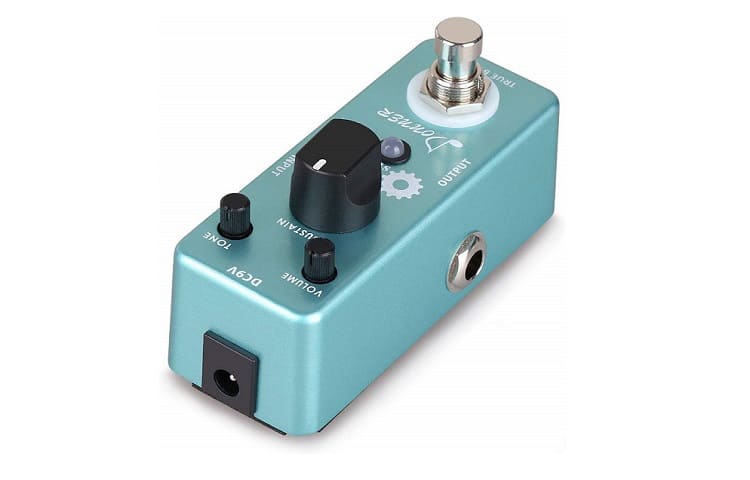
This is the most extreme of the distortion type pedal.
The sound that it creates can be called “noisy”. It creates a crackling or buzzy sound to your guitar. This pedal creates a sound change that is so dramatic that it will be hard to find the original sound of your guitar in the output.
Your fuzz pedal will allow you to alter the sound output using adjustment knobs. You can change up the way the pedal works, through these pedals by simply altering the settings.
Fuzz pedals can create a variety of sounds, and in general are the most diverse of the three types of distortion pedals.
Pros: A variety of sound options. Easy adjustment.
Cons: Sound can be noisy. Can be complicated for beginners.
Who needs this: This is another good, basic pedal. It’s a great option for all levels and styles of playing. However, if you want to still hear the original sound of your guitar, you should steer clear of the fuzz pedal.
Delay
This is another pedal that you’ll see on almost every guitarist’s board.
Delay pedals allow you to make subtle stops between notes, creating a thicker tone and a more substantial atmospheric quality to your music. Delay pedals come in both digital and analog versions.
Both work great, and can create amazing sound for your guitar. However, digital delay pedals are a better option for the experienced guitarist. Analog delay pedals are a great way to learn and experience the impact of delay, but without the complexity.
Analog delay pedals are not nearly as responsive as digital delay pedals, but this is a great option for the beginner, who needs to have something more forgiving.
Pros: Create a great impact on your playing style. Two versions (analog and digital) for a variety of playing styles and experience levels.
Cons: This is another pedal that doesn’t have many cons. However, if you’re new to playing, digital delay pedals may be too responsive. Stick with analog.
Who needs this: With better sound definition, all guitarists can benefit from a delay pedal.
Multi Effects
If you just don’t like the idea of having a bunch of different effect pedals, you may want to use a multi effect pedal.
This pedal does just what its name suggests, it gives you a variety of different sound effects, in one pedal. Multi effect pedals are a great way to try out a variety of different effects, without the investment of a bunch of pedals that you may not want in the long run.
Different brands combine different effects in their multi effect pedals, so you’ll need to do some research before you buy to determine which pedal and which effects you are most interested in.
Pros: Gives you great variety, without a ton of different pedals. Generally easy to use.
Cons: Multi effect pedals may not come with all the options you want. You’ll have to research.
Who needs this: This is a great pedal for the beginner who wants to experiment but doesn’t want to invest in a bunch of pedals. Also, this is a great option for any guitarist that just wants a simple setup, with variety, minus the cords.
Chorus
The chorus pedal creates an effect that sounds like a lot of different guitar voices playing at the same time.
Kind of like a choir of singers. However, the timing of the voices is slightly off, so the sound created is more like a wobble than a succinct joining of multiple guitars.
This is a fun pedal, and creates a full, rich sound, despite the “wobbly” nature. Depending on how it is setup, the effect can be very distinct and obvious or subtle.
Pros: Creates a full, rich sound. Can be fun to experiment with.
Cons: The wobble sound may not be right for everyone. Requires time to find the right sound for your style.
Who needs this: This pedal is better for experienced players that are looking to enhance the sound of their guitar. Because it take experimentation to find the right sound, a more familiar guitarist will find this pedal fun to work with. A beginner might find it cumbersome.
Compressor
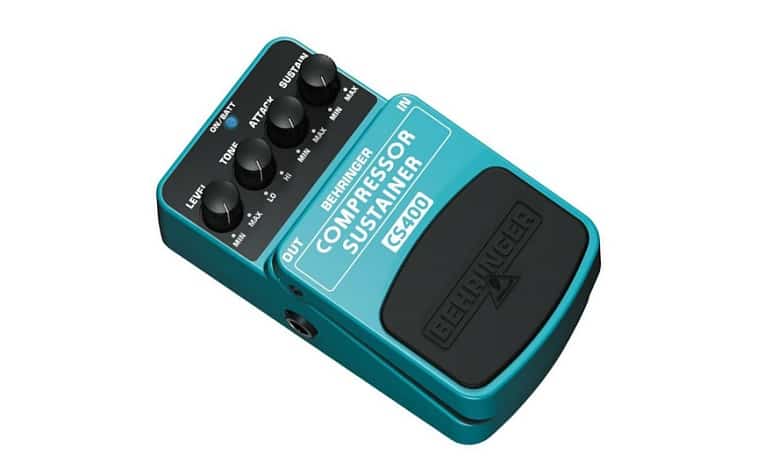
A compressor pedal is often over looked by many guitarists.
Compressor pedals can make the sounds created by other pedals on your pedal board, that much better. They can sharpen clean tones, bring more life to your distortion pedal, and add some extra snap from your rhythm pedal.
This pedal is a great addition to pedal board for just about any style of playing, since they make the quality of sound, created by other pedals, just that much better.
They can be tricky to figure out, but once you do, you’re unlikely to leave home without this pedal.
Pros: Makes great sounds, sound even better. Great for a variety of playing styles.
Cons: Can be challenging to learn.
Who needs this: This pedal is best for the experienced guitarist that want’s more from their pedal board. Beginners will find this pedal challenging.
Reverb
Reverb refers to the echo sound that is created by this pedal.
Many amplifiers already come with a reverb feature built in, however these can be of poor quality, and often have limited adjustment ability.
Adding a reverb pedal to your guitar will create an added amount of atmospheric depth to your music and can be a great complement to other effect pedals on your pedal board. You can easily add a reverb pedal as your only pedal, since it sounds great with a clean, unaltered sound from your guitar.
Reverb pedals often come in three different types: spring, hall and room. You can get these sound types on individual pedals or many reverb pedals come with all three options.
Pros: Can be a stand alone. Easy to use. Compliments other sounds.
Cons: Not a lot of variety here.
Who needs this: Another great pedal for all styles and experience levels. This is such a popular pedal that many players start with this pedal before they move on to a distortion pedal.
Volume
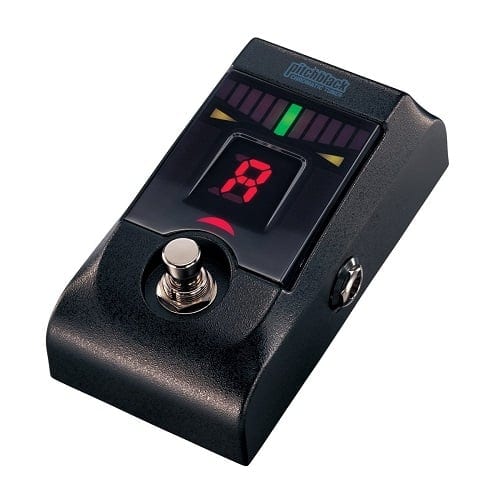
This pedal is a great way to change the volume of your guitar without having to stop playing.
The idea here is that since you need two hands to play, being able to vary your volume using your foot, is a handy feature. This pedal also allow for some cool variation of volume as an effect during songs, or allows you to play quite when you’re backing a soloist, or become the soloist when you need.
This is a simple pedal, and in reality could be considered a necessity for all guitarists.
Pros: Easy to use, no added knobs or buttons. Doesn’t require power.
Cons: Takes some practice to learn subtle adjustments.
Who needs this: This pedal could easily be considered a necessity for all guitarists. If you don’t want to stop playing to adjust volume, a pedal is a great solution. Simplicity here makes is perfect for all levels of experience.
Looper
This pedal doesn’t do anything to change the sound of your guitar.
It is considered a utility pedal, and isn’t really useful for the guitarist that is just playing for fun. The looper pedal takes a segment of what you’ve played and records it.
The recording is then played in repeat or “looped” through your amp. This is a handy pedal if you are the only guitar in your band, but you want to play more complex music.
Recording a melody or harmony that you can play around is a great way to add sound and depth to your music.
Pros: Allows for more than one guitar part, when there’s only one player.
Cons: Not useful for hobby guitarists. Can be complicated to operate.
Who needs this: This pedal is most useful for live guitarists who are playing solo guitar. The ability to record a second, back up part gives more depth to the sound of a small, live band.
Octave & Pitch
This pedal allows you to quickly jump between the same note in a higher or lower pitch.
When you are playing your guitar, you may need to jump from high to low, quickly, and don’t want the added challenge of moving your hand up and down the fretboard.
It can also allow you to play the same note in different octaves at the same time. The resulting sound is rich and full, and can really add an extra layer of complexity to your music.
Pros: A warm sound, simplicity in changing octaves.
Cons: Work best with single notes, doesn’t work well with chords.
Who needs this: This pedal is good for the experienced guitarist, or one that is playing more complicated music. A beginner will find this pedal fun, but doesn’t allow the new learner to experience and understand the skills needed for moving up and down the fretboard.
EQ
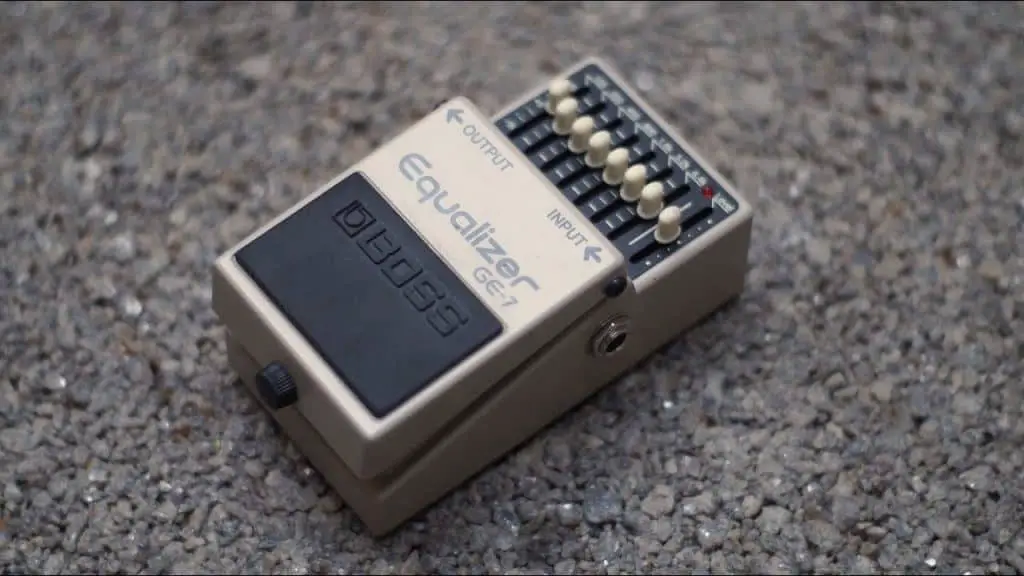
EQ pedals allow you to implement fine tuning to the bass, treble and mid range tones of your guitar.
In some respects, this can also be accomplished through your amp, but it often is not as specific, though using a pedal can give you more options and greater variability.
Generally, most EQ pedals allow you to make adjustments to seven bands of sound, and for the experienced guitarist, this can provide a more unique and individualized sound.
Pros: Broader sounds, more sound variability. Good fine tuning.
Cons: More complicated, takes some understanding of what sounds you want.
Who needs this: This pedal is made for the more experienced guitarist or for the guitarist that wants to create a more robust and individualized sound.
Boost
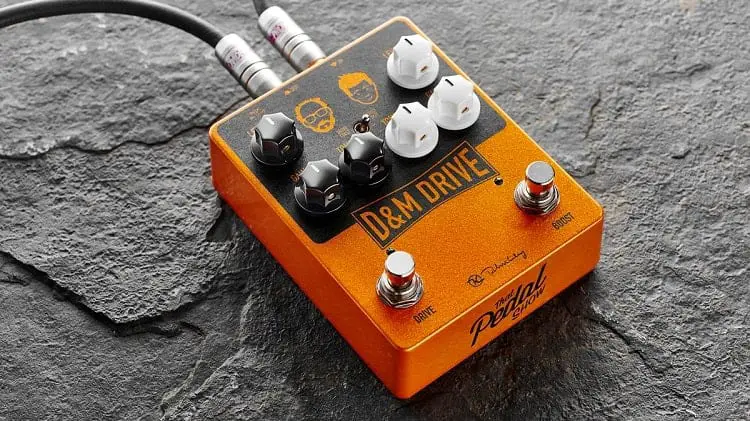
Boost pedals increase the strength of the electrical signal created by the guitar before it reaches your preamp and amp.
These pedals don’t really change the quality of the sound your guitar makes, but rather rounds out the sound without adding feedback. A boost pedal will keep the sound of your guitar very clean.
Pros: Simple to use, doesn’t distort the original guitar sound.
Cons: Doesn’t distort the guitar sound.
Who needs this: This is good pedal for all players. However, it is best for the experienced player that want to generate more sound, but not necessarily through their volume controls.
Overdrive
The overdrive pedal is a lot like your boost pedal. It gives more push to the electrical signal, but doesn’t change the sound coming from the guitar and through the amp.
Overdrive pedals provide a more natural sound than the boost pedal, so the end result is a sound that is not overpowering or sluggish.
Pros: Versatile pedal. Creates a strong, natural sound.
Cons: Doesn’t distort the sound, not as strong as the boost pedal.
Who needs this: While many guitarists like the overdrive pedal over the boost or distortion pedal, this is preferred pedal of many classic rock and blues guitarists.
Harmonizer
The harmonizer or harmony pedal provides the same benefits to a guitarist as octave and looper pedals.
What was once accomplished using more than one guitarist, can now be done using just one guitar. The harmonizer adds intervals over the notes or melody that you are playing, creating a multiplayer sound from a single instrument.
Unlike octave pedals that can only raise or lower a single note over the full 12-step range, the harmonizer pedal is able to raise or lower a note over any desired interval.
In essence the harmonizer allows the guitarist to make chords from a single note, or add complexity to the chords they are already playing.
Pros: Easily creates a more diverse sound. More versatile than the octave pedal.
Cons: Can be complicated to use. Not great for all ensemble types.
Who needs this: If you’re a one-man-band or if your band is small, and wants to have the sound of more than one guitar, this is a great option. Because this pedal will tend to play over the original sound of the guitar, it may be most practical for experienced guitarists, who already know what their guitar sounds like and are comfortable with playing with others.
Synthesizer
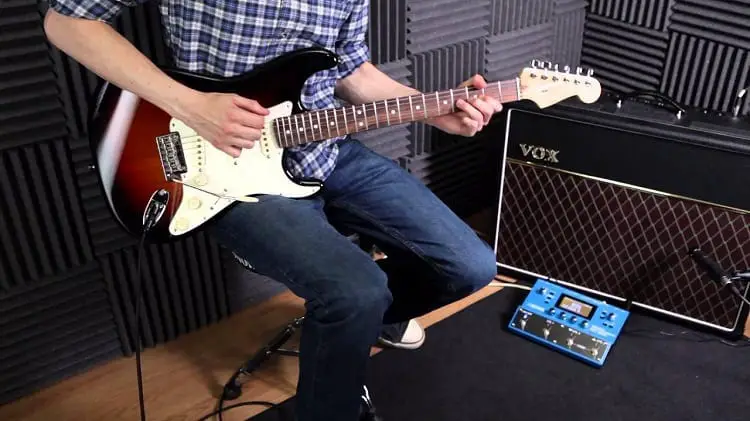
This pedal is a really cool option for a guitarist that wants to completely change the sound of their guitar.
As it suggests, the synthesizer pedal will take the sound of your guitar and change it so that it sounds more like a synthesizer or keyboard than a guitar.
There are lots of synthesizer pedal options on the market, and most of them make unique sounds. If you are looking for your guitar to make a particular sound, you may need to try a number of synthesizer pedals.
This is a fun pedal to experiment with, and wouldn’t be considered a necessary pedal to have. It’s a fun add-on for guitarists who want to experiment with their sound.
Pros: Simple to use, makes a cool sound. Lots of sound variety from brand to brand.
Cons: Not easy to swap if you need a replacement.
Who needs this: There isn’t a particular style or skill level that will benefit from a synthesizer pedal. However, this is a great accessory for the player that likes to switch things up and be creative with their sounds.
Sustain
A sustain pedal and a compression pedal are almost interchangeable.
They both allow you to extend the sound being played, or “hold” a note longer. It is important to note that sustaining a sound may be accomplished without the use of a pedal, and it is good for beginners to learn how to extend the length of a note without enhancement.
Sustainers are a great option for live and studio musicians that need to note extension and volume with little to no effort.
Pros: Hold a note without losing volume. Easy to use even for beginners.
Cons: May not be necessary for all guitarists. Redundant if you have a compressor pedal.
Who needs this: This isn’t a bad pedal for any style or skill level. Just make sure that you actually need or want a sustainer for your applications, otherwise it may be money spent needlessly.


